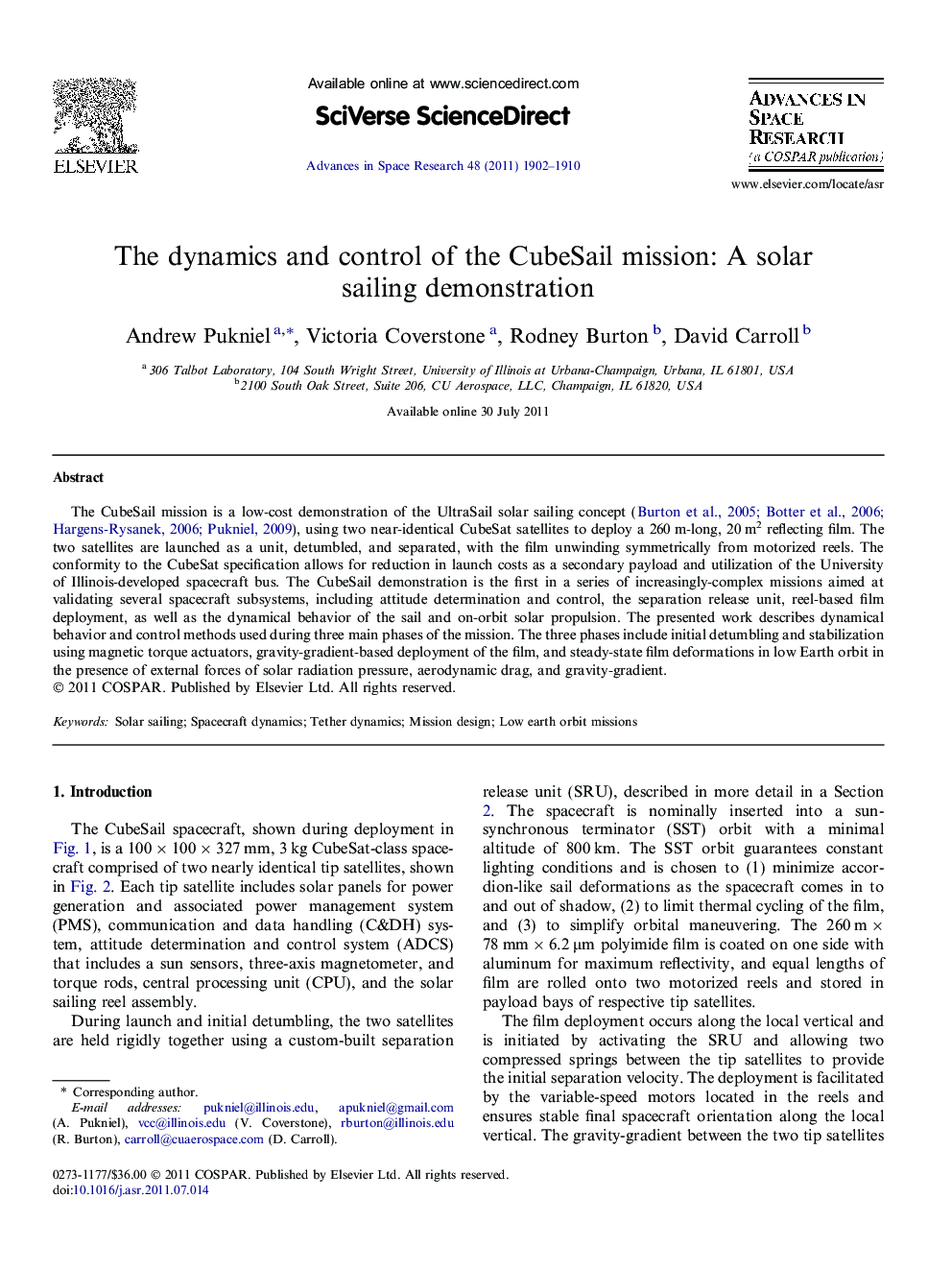| Article ID | Journal | Published Year | Pages | File Type |
|---|---|---|---|---|
| 1764972 | Advances in Space Research | 2011 | 9 Pages |
The CubeSail mission is a low-cost demonstration of the UltraSail solar sailing concept (Burton, 2005, Botter et al., 2006, Hargens-Rysanek, 2006 and Pukniel et al., 2009), using two near-identical CubeSat satellites to deploy a 260 m-long, 20 m2 reflecting film. The two satellites are launched as a unit, detumbled, and separated, with the film unwinding symmetrically from motorized reels. The conformity to the CubeSat specification allows for reduction in launch costs as a secondary payload and utilization of the University of Illinois-developed spacecraft bus. The CubeSail demonstration is the first in a series of increasingly-complex missions aimed at validating several spacecraft subsystems, including attitude determination and control, the separation release unit, reel-based film deployment, as well as the dynamical behavior of the sail and on-orbit solar propulsion. The presented work describes dynamical behavior and control methods used during three main phases of the mission. The three phases include initial detumbling and stabilization using magnetic torque actuators, gravity-gradient-based deployment of the film, and steady-state film deformations in low Earth orbit in the presence of external forces of solar radiation pressure, aerodynamic drag, and gravity-gradient.
